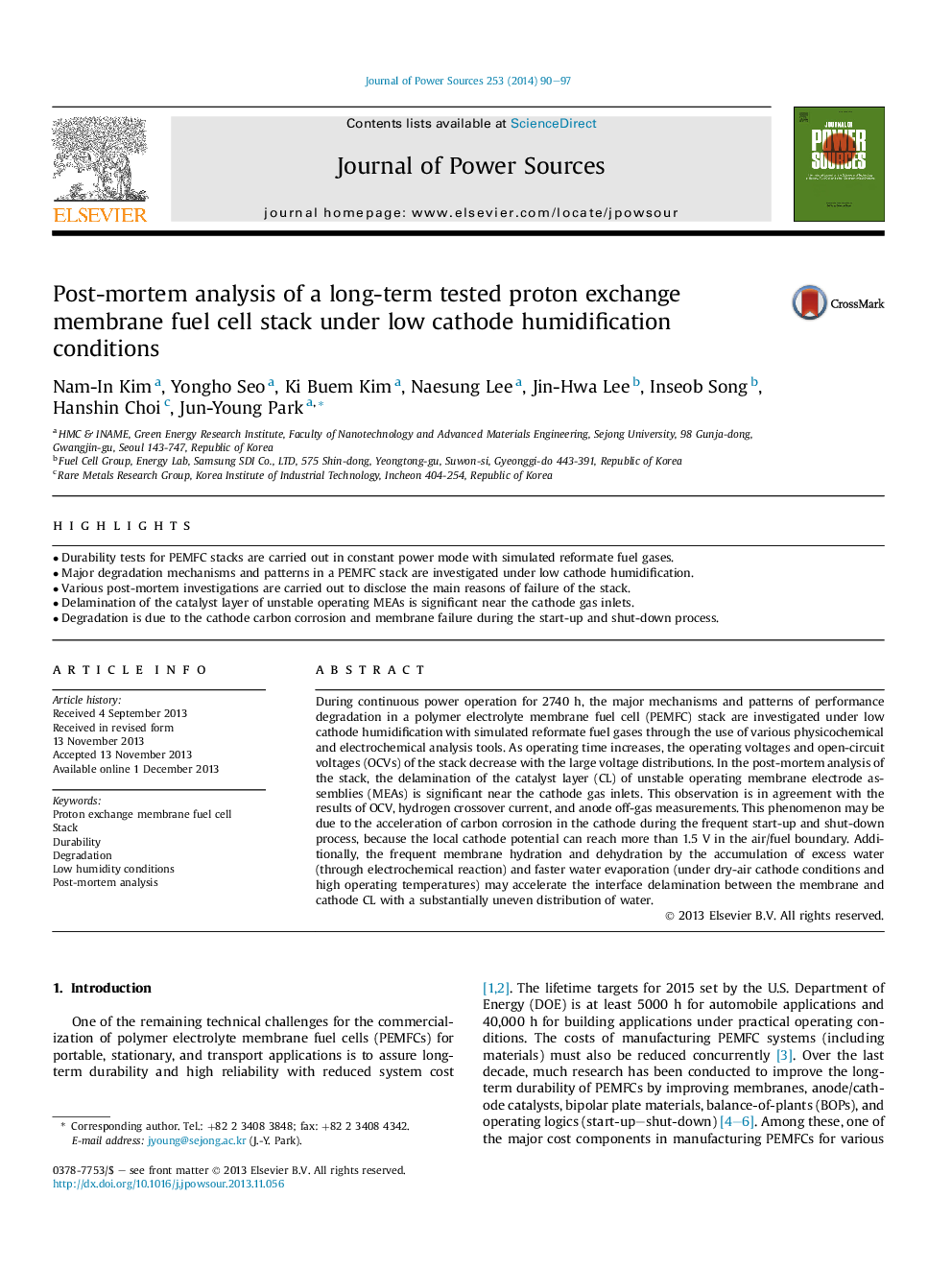| Article ID | Journal | Published Year | Pages | File Type |
|---|---|---|---|---|
| 1287065 | Journal of Power Sources | 2014 | 8 Pages |
•Durability tests for PEMFC stacks are carried out in constant power mode with simulated reformate fuel gases.•Major degradation mechanisms and patterns in a PEMFC stack are investigated under low cathode humidification.•Various post-mortem investigations are carried out to disclose the main reasons of failure of the stack.•Delamination of the catalyst layer of unstable operating MEAs is significant near the cathode gas inlets.•Degradation is due to the cathode carbon corrosion and membrane failure during the start-up and shut-down process.
During continuous power operation for 2740 h, the major mechanisms and patterns of performance degradation in a polymer electrolyte membrane fuel cell (PEMFC) stack are investigated under low cathode humidification with simulated reformate fuel gases through the use of various physicochemical and electrochemical analysis tools. As operating time increases, the operating voltages and open-circuit voltages (OCVs) of the stack decrease with the large voltage distributions. In the post-mortem analysis of the stack, the delamination of the catalyst layer (CL) of unstable operating membrane electrode assemblies (MEAs) is significant near the cathode gas inlets. This observation is in agreement with the results of OCV, hydrogen crossover current, and anode off-gas measurements. This phenomenon may be due to the acceleration of carbon corrosion in the cathode during the frequent start-up and shut-down process, because the local cathode potential can reach more than 1.5 V in the air/fuel boundary. Additionally, the frequent membrane hydration and dehydration by the accumulation of excess water (through electrochemical reaction) and faster water evaporation (under dry-air cathode conditions and high operating temperatures) may accelerate the interface delamination between the membrane and cathode CL with a substantially uneven distribution of water.
